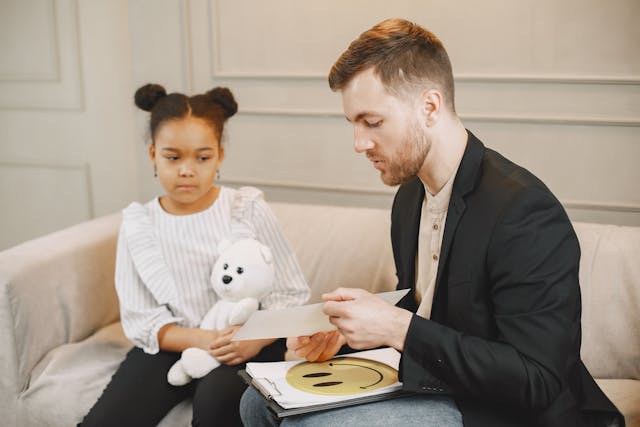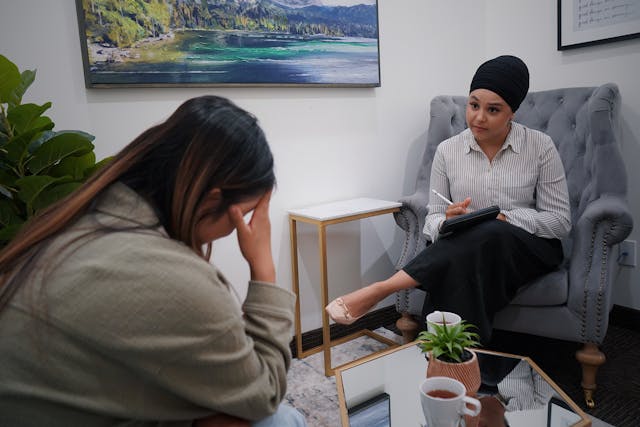Understanding DAP and SOAP notes
DAP and SOAP notes are essential for therapists to document client interactions effectively. DAP notes focus on three components: Data, Assessment, and Plan, streamlining documentation to client needs. SOAP notes follow a structured format: Subjective, Objective, Assessment, and Plan to ensure consistency and clarity.
What are DAP notes?
DAP therapy progress notes provide a structured template for documenting therapy sessions, ensuring clear communication and continuity of care. These progress notes consist of:
- Data: Subjective and objective observations collected during the session.
- Assessment: Data analysis, focusing on the client's behavior, progress, and clinical notes.
- Plan: Treatment plan with strategies and next steps based on the client’s response.
Writing progress notes for future sessions in this format helps mental health professionals clearly document the therapy session, including the client’s behavior and response consolidated into the Data section.
What are SOAP notes?
SOAP notes are widely used for therapy notes, providing a structured framework for documenting a client’s progress note each therapy session. They include:
- Subjective: The client’s self-reported experiences during the session.
- Objective: Observable behaviors and subjective and objective observations noted by the therapist.
- Assessment: Evaluation of the client’s behavior and progress based on the data.
- Plan: Updates the treatment plan, focusing on interventions based on the client’s response.
Using SOAP notes helps maintain clear progress notes, ensuring comprehensive care. Following tips for writing SOAP notes improves consistency in note writing and enhances client care.
DAP notes vs. SOAP notes: What's the difference?
DAP and SOAP notes document therapy sessions, but they vary in structure and focus. Understanding these differences helps mental health professionals effectively communicate and track a client's treatment progress.
Structure
- SOAP notes: Follow a strict order—Subjective (client’s words), Objective (therapist’s observations), Assessment (therapist’s interpretation), and Plan (next steps). This format ensures consistency.
- DAP notes: More flexible, focusing on data collection, assessment, and planning. The structure can adapt to different therapy sessions, allowing for more personalized documentation.
Focus
- SOAP notes: Balance between subjective and objective observations, giving a well-rounded view of the client's progress.
- DAP notes: Emphasize collecting detailed data to form the basis of assessments and plans. The focus is on analyzing client behavior and responses.
Assessment
Both formats include data sections and assessments, but SOAP notes analyze subjective and objective data together, while DAP notes dive deeper into the client’s behavior and patterns.
Planning
Both notes include an assessment section and a plan for future interventions, but SOAP notes outline the next steps directly tied to assessment data. In contrast, DAP notes offer flexibility in treatment planning based on specific client responses.
SOAP and DAP note templates
If you're looking for SOAP and DAP note templates to streamline your documentation process, Carepatron offers a variety of resources to assist you. Here are direct links to their informative blogs and templates:
- DAP Notes Template
- DAP Notes for Case Managers
- Progress notes template
- 15 SOAP note examples and templates
- Mental Health Progress Note Templates
Explore these resources to find the templates and guidance you need to enhance your documentation practices.
How to write good SOAP and DAP notes
As mentioned, SOAP and DAP notes are the cornerstones of effective client care. They ensure accurate progress recording and facilitate seamless communication with other healthcare providers. Here's your roadmap to writing exceptional SOAP and DAP notes:
Master the format
Understand the structure of both SOAP and DAP notes. Each element (Subjective, Objective, Assessment, Plan) is critical in creating a comprehensive view of the client's progress. Knowing how these parts interact ensures thorough, informative notes.
Gather detailed information
Go beyond surface-level conversations during sessions. Pay attention to subtle cues and non-verbal communication; these small details can provide valuable insights into the client's emotional state and progress.
Be clear and objective
Write personal notes with precision and clarity. Ensure your notes are objective, avoiding personal bias while describing the client’s experiences. This accuracy builds trust and ensures effective communication with other healthcare professionals.
Center on the client
Your notes should reflect the client's unique journey, focusing on their needs, preferences, and goals. Involve the client in the decision-making process and document their input, ensuring your notes accurately capture their progress and priorities.
Track progress
Monitor changes in the client's condition or treatment plan. Document improvements, setbacks, or shifts in treatment goals, providing a comprehensive overview for continuity of care.
Review and revise
Before finalizing, review your notes for accuracy and completeness. This quality assurance step ensures your notes adhere to professional standards and provide a clear record of care.
Maintain confidentiality
Ensure your notes protect client privacy, adhering to HIPAA guidelines and legal requirements. Include only relevant information and store your notes securely to maintain confidentiality.
Are DAP notes or SOAP notes more useful for therapists
Therapists often struggle with the choice between DAP and SOAP notes. Both formats serve the same purpose – documenting a client's treatment plan and interactions – but differ in structure and emphasis. Here are three key factors to consider when making this decision:
Tailoring to client needs
The complexity of your client's condition can influence your choice. For clients with intricate mental and behavioral health issues or chronic conditions, DAP notes' integrated approach might be more useful. It blends subjective experiences with objective data, providing a holistic view of their response to treatment and progress over time.
However, SOAP notes may be more suitable in emergency care and mental health settings, where documentation focuses primarily on symptoms and objective information.
Collaboration and communication
Consider the importance of seamless communication with other healthcare professionals involved in the client's care. Although widely used across various healthcare disciplines, SOAP notes offer a standardized format that facilitates smoother communication.
Preference and legal requirements
Ultimately, the choice may come from personal preference and legal requirements within your practice setting. Some therapists find the narrative flow of DAP notes more intuitive, while others value the clear outline of information offered by SOAP notes. Additionally, in some healthcare settings, SOAP notes may be mandated as the official record due to legal and regulatory requirements for clear and concise mental health documentation only.
The takeaway
DAP and SOAP notes are effective tools for documenting therapy sessions and tracking client progress. The best choice depends on the therapist's preference, the therapeutic approach, and the specific needs of the client and the healthcare setting. Therapists may even choose to use one note format, primarily, or a combination of both, depending on the context and requirements of their practice.
How can Carepatron help with clinical documentation?
Feeling bogged down by paperwork? Carepatron simplifies clinical documentation, transforming it from a burden to a tool for better patient care. Leverage our user-friendly software with customizable templates and intuitive interfaces to quickly and accurately record patient encounters, assessments, and treatment plans. This translates to streamlined workflows and more time dedicated to your patients.
Carepatron goes beyond streamlining documentation. Our secure platform ensures seamless integration with EHR systems and offers 24/7 access to patient information through online portals. Robust data encryption safeguards patient confidentiality, and automated compliance checks minimize the risk of errors and penalties. Carepatron's medical dictation software also empowers you to dictate notes using voice recognition, saving time and reducing transcription mistakes.
Ready to experience the power of effortless documentation? Sign up for a free trial of Carepatron today.




.jpg)

.jpg)

.jpg)


.jpg)

.jpg)


.jpg)


.jpg)





.jpg)
.jpg)
.jpg)